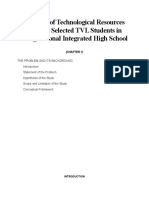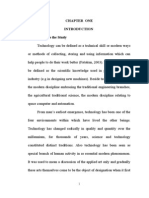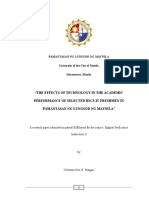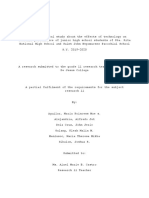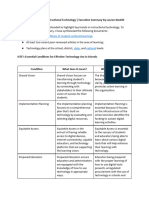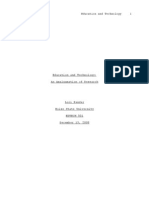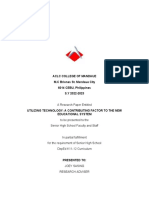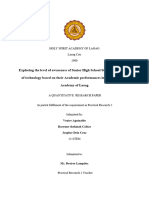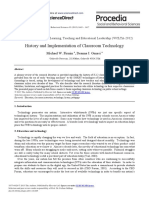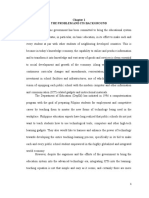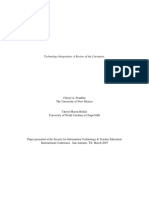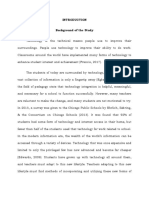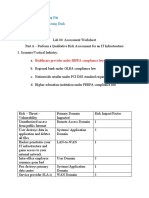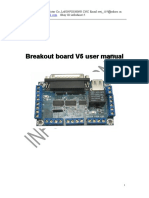0% found this document useful (0 votes)
103 views12 pagesPractical Research
The document summarizes a research study on the impact of the unavailability of technological resources among senior high school students at Pagayawan Integrated School. The study aims to understand how a lack of technology affects student performance and satisfaction. It also seeks to determine how access to technology could help students academically. The significance of the study and its scope are discussed. Key terms related to technology and education are defined. A literature review provides background on the importance of technology integration in education and the factors that influence teacher technology use.
Uploaded by
Najmah AhmadCopyright
© © All Rights Reserved
We take content rights seriously. If you suspect this is your content, claim it here.
Available Formats
Download as DOCX, PDF, TXT or read online on Scribd
0% found this document useful (0 votes)
103 views12 pagesPractical Research
The document summarizes a research study on the impact of the unavailability of technological resources among senior high school students at Pagayawan Integrated School. The study aims to understand how a lack of technology affects student performance and satisfaction. It also seeks to determine how access to technology could help students academically. The significance of the study and its scope are discussed. Key terms related to technology and education are defined. A literature review provides background on the importance of technology integration in education and the factors that influence teacher technology use.
Uploaded by
Najmah AhmadCopyright
© © All Rights Reserved
We take content rights seriously. If you suspect this is your content, claim it here.
Available Formats
Download as DOCX, PDF, TXT or read online on Scribd
/ 12




